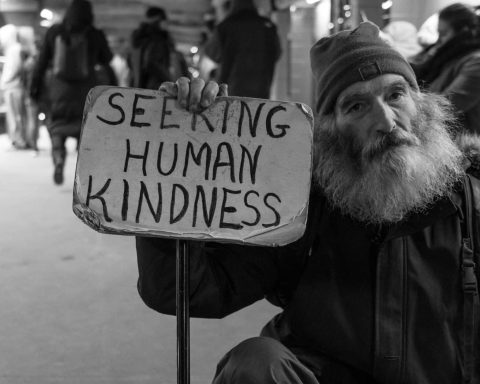 David Loxterkamp is a recently retired family physician from the midcoast of Maine, USA. He has lived and worked in the same community for the past four decades. He was the medical director for Seaport Community Health Center and on faculty at Northern Light Family Medicine Residency Program.
David Loxterkamp is a recently retired family physician from the midcoast of Maine, USA. He has lived and worked in the same community for the past four decades. He was the medical director for Seaport Community Health Center and on faculty at Northern Light Family Medicine Residency Program.
Teams are the talk of the town in practice transformation circles. They are extolled as the solution for many of our deficiencies– from chronic staffing shortfalls to employee burnout to patient apathy and discontent. But they are rarely found in a family practice. To become a team, members must spend time together, get to know each other, challenge and learn from one another, share responsibilities, and be willing to mirror the kind of community we all seek. In a word, teams are built on relationships, just like family medicine. This paper examines the forces that favor and discourage team building, and calls for a return to an office culture that fosters our founding values.
Introduction
The average ambulatory office is a beehive of activity. An operational diagram looks something like this:
A patient of Dr. Jones– elderly, for example, with Type 2 diabetes and a host of other problems– is notified that his doctor just retired. He is assigned to a team. The core of that team is the medical assistant (MA)–primary care provider (PCP) dyad. It provides the basic and necessary screenings, prescription refills, and care coordination. But the team also includes an urgent care clinician for acute illness or trauma, a clinical pharmacist for A1C levels above 9.0%, a behavioral therapist for an elevated Audit, GAD-7, or PHQ-9, and a registered nurse for the Medicare Annual Wellness Visit. Surrounding them– anonymously, invisibly, and unaccountably– are patient service representatives (PSRs) who answer the telephone, schedule appointments, make referrals, prep charts, code billing, and sort the medical record. The endocrinologist, nephrologist, cardiologist, neurologist, and ophthalmologist will each take their turn in guarding against the serious complications of the disease. And if the PCP has not yet made the referral, a hospitalist will.
Staff communicate with each other through entries “dropped” into the electronic health record. Patients doubt if the entries are ever read, given how often the same questions are repeated.
We know that someone is assigned to each task, but it is unclear if anyone is directing them. Once a protocol is activated or a referral is made, the system takes on a life of its own. Staff communicate with each other through entries “dropped” into the electronic health record. Patients doubt if the entries are ever read, given how often the same questions are repeated. They worry if their requests will be honored, given how frequently things fall through the cracks. While such a system could be called a team, it is no more so than a group of passengers on a bus, each co-located and heading in the same direction, but with different destinations in mind. Can we do better?
Checklists
In 2007, surgeon and author Atul Gawande published “The Checklist,” one of the most influential of his New Yorker essays.1 Two years later he expanded it into a best-selling book, The Checklist Manifesto: How To Get Things Right.2 Well, “right” when applied to procedures that are highly complex, consequential, or urgent. His key insight was that complications can be avoided by breaking down procedures into small steps completed in a precise order.
Case in point is the insertion of central line catheters, which provide reliable access for the infusion of fluids, nutrients, and drugs among patients hospitalized in a critical care unit. Prior to 2001, infection rates were common and resulted in a fatality rate of five to twenty-eight per cent. A critical care specialist at Johns Hopkins Hospital by the name of Peter Pronovost set about to lower those rates. He introduced a five-point checklist that required doctors to 1) wash their hands with soap 2) clean the patient’s skin with an antiseptic, 3) drape the entire patient, 4) wear a sterile cap, mask, gown, and gloves, and 5) place a sterile dressing over the insertion site once the catheter was in place. With this amazingly simple protocol, the ten-day infection rate dropped from eleven to zero per cent, and over the next fifteen months only two central line infections were recorded in the entire hospital.
Within months, this approach was applied to other kinds of semi-permanent insertions– endotracheal tubes, urinary catheters, prosthetic joints– with continued success. The checklist proved to be a useful memory aid. It made the otherwise unconscious steps of a performing a procedure more deliberate. It required observers to speak if steps were omitted or completed in the wrong order. Some doctors objected: no one likes to be told what to do, especially by a subordinate. But they understood that deviations from protocol led to a rise in infection rates.
The checklist, it turned, was not a panacea. As it became applied farther afield– for the emergency treatment of presumed pneumonia or stroke, for example– it led to the overuse of drugs and imaging studies. It worked poorly where multiple problems co-existed. It lacked flexibility and contingency. It was subject to gaming when rewards were applied to its adoption. And it was ignored when no one was looking or too busy to care.3 Concluded one critic, “patients are too varied, their physiologies too diverse and our knowledge still too limited” for checklists to apply to every circumstance.4
Worst of all, the checklist wormed its way into the primary care office, where proper technique is not a dominant concern and the complexity lies in the our patients’ stories, motivations and social entanglements. Nevertheless, checklists are used to record demographic data, screen for depression, upcode billing charges, and organize the office note. Consequently, the chart has became more important than “the patient” itself, and now neither provides a useful narrative. Instead of the gestalt– what qualitative researchers call immersion-crystallization– that stems from a whole-person understanding, checklists impose a kind of linear thinking. This tempts the busy clinician into making assumptions based on the previous step (often, the chief complaint) and not straying from them. As a consequence, we are losing the capacity for surprise and wonder. We’ve forsaken curiosity. We have become data-extraction machines.
Bucket Brigades
In 1948, Congress commissioned a longitudinal study of the residents of Framingham, Massachusetts. The Framingham Heart Study, now in its third generation, began with an initial cohort of 5,209 men and women. Every three to five years, participants would voluntarily submit to a detailed medical history, physical examination, and a panel of tests. While the Heart Study is best known for identifying the risk factors for cardiovascular disease (LDL-C, most famously), its contributions have extended to a host of factors that influence our physical and mental well-being.
In the early 2000s, Nicholas Christakis and James Fowler began studying the Framingham data to explore the social connection between the participants and its impact on their lives.5 Between 2007 and 2013, they published a series of peer-reviewed papers that established how social networks shape a person’s likelihood of becoming a smoker or drinker, growing obese, getting divorced, feeling lonely, or finding happiness. Not only does a partner or close friend exert a strong influence, but so do their partner’s friends and their friends’ friends– up to three degrees of separation.
A social network is a group of people who are, to varying degrees, connected to one another. Within it, the strength and number of ties between members is more important than the individual people. They shape the network; that is, they decide with whom and how frequently to interact, and at what degree of intimacy. But the network also shapes them and takes on a life of its own. The two fundamental aspects of any social network are connection (who is connected to whom) and contagion (what actually flows across the ties).
The two fundamental aspects of any social network are connection (who is connected to whom) and contagion (what actually flows across the ties).
One example of a social network is the bucket brigade, where, in olden days, buckets of water were passed from along a line to extinguish a fire. No one member was connected to more than two others, and there were multiple opportunities for water to spill. The brigade fits the simple definition of a team– “a group of people working together to achieve their goal.6”– much like horses hitched together to pull a carriage. Indeed, the word “team” comes from the old English, Fresian, and Norse word for bridle, later applied to a set of draft animals, and finally to a group of individuals involved in joint action.7 Sadly, this is the model most often employed in ambulatory practices (described above), where the bucket is the patient, or, more precisely, their chief complaint. Here, the remedy for error (a dropped bucket) is to hire more staff, introduce a checklist, or require bucket-handling certification.
While the human brain is designed to cope with large social networks, our capacity for friendship and teamwork is more limited. It is determined less by our ability to communicate than by the mind’s agility to track social relationships, “to form mental rosters that identify who is who, and to form mental network maps that track who is connected to whom and how strong or weak, cooperative or aggressive, those relationships are.” Size matters. Robin Dunbar has estimated that, throughout history, the optimal size of a group size is 150, which represents the maximum number of individuals who can know everyone else, if they are friendly or hostile, and how they are related to one another.
The professional community
In a paper entitled “What Makes Teacher Community Different from a Gathering of Teachers”8
Pamela Grossman, Sam Wineburg, and Stephen Woolworth recruited two dozen teachers from an urban high school for the advertised goal of creating a humanities curriculum. Most came from the English and history departments. Over the course of three years, they were invited to monthly, day-long meetings to discuss literary and historical readings; there was also a five-day retreat each summer, and bi-weekly meetings after school. It was a “community by declaration,” diverse in background, race, and gender, and whose members otherwise would have never chosen to spend time together.
Initially the group had cordial encounters, creating what the authors call a pseudo-community, one that “behaves as if they all agree.” Whatever conflicts arose were ruminated on in private, outside the formal meetings. Back in their individual classrooms, members could think and act as they always did, without critique or self-reflection. For in a pseudo community, there is always a front stage and back stage, as Erving Goffman describes it: a public persona and the private reality, separated by a curtain of norms and etiquette.9
Conversations among the teachers were transcribed, and over time the authors observed a shift in the group dynamic. Participants began to speak of themselves not as individual educators but as members of the study group. They vocalized differing opinions about group process, textual interpretation, and the shape of the emerging curriculum. Even their arguments were no longer written off as a personality clash or disciplinary bias. As the members listened more deeply to each other, they were able to consider alternative explanations and incorporate them as part of the group’s creative process.
The authors summarized what they believe are the key elements of community as 1) the formation of group identity, 2) the navigation of fault lines through a negotiation of new norms for communication, and 3) a sense of responsibility for each other’s growth and development. This doesn’t mean that tensions disappeared. Indeed, there was alway movement: away from the center with one’s opposing views; back toward the center with consensus and compromise. They began to see community as an opportunity for learning in a pluralistic setting, and themselves as ambassadors for the group among the school’s faculty at large.
What is required for such a transformation? First, time and money. Most of the change occurred over the first eighteen months of the project, and it could not have happened without grant money that assured the necessary time and place to meet. Yet resources alone are insufficient. A safe environment is also required, where individuals feel “free to voice uncertainty, explore ideas, state and retract opinions.” Here they came to accept their differences as a resource rather than a liability. What emerged was a new kind of leadership, distributed among the members, who saw the group’s success as their collective responsibility. As the authors point out, “leadership is not a personality trait but an attribute self-developed in social relationships.” What, then, was their accomplishment, besides the almost secondary goal of curricular reform? The authors’ conclude:
“Of all the habits of mind modelled in schools, the habit of working to understand others, of striving to make sense of differences, of extending to others the assumption of good faith, of working toward the enlarged understanding of the group—in short, the pursuit of community may be the most important.”
Obstacles & Opportunities:
It is remarkable that a diverse group of teachers could become, at least in the authors’ eyes, a professional community. Could we imagine the same for an ambulatory practice? The obstacles are daunting:
First, external forces work against it. Most policy decisions are made by absentee landlords– organization leaders who govern remotely. And there is too much staff turnover to accumulate shared memory. It is hard not to regard this as conscious strategy. Leadership seems to prefer the cost of travelers and the constant onboarding of new staff to the cumbersome challenge of creating a happy workforce. As is well known, a detached and defeated office staff may grumble, but they never revolt.
Within the practice itself, there are structural and occupational barriers. Each employee understands and is responsible for their own job description. The workday is far too busy to reflect on the bigger picture, let alone find time or energy for that discussion. Within a small office, the clinician’s universe is even smaller, consisting of the assigned exam rooms; the patient panel, and the scheduled hours of work.
Finally, there are the internal forces of human nature. Clinicians fancy themselves as “doers” and not thinkers. We like to be in control, or at least project that image. And we are, by nature, conflict averse. Thus it is easier to retreat to our exam rooms or bury ourselves in the EHR than have expose our biases and weaknesses to others.
Even when conditions are right, tensions persist: do we focus on patient care or attend to our professional development; do we grow staff size to meet clinical demands or keep the numbers low to preserve our relationships; do we allow flexibility and individuality in patient care or lean towards a simple, more uniform, and just approach. The work of community is hard, and friction points heat up before the lubrication arrives. St. Benedict, the founder of Western monasticism, summed it up nicely when he said, “living in community is all the aestheticism you need.”
As a long-time medical director, I know how difficult it is to run a small office.
What can be done? Certainly an office that runs mechanically is better than one that doesn’t run at all. But from what we have learned, certain steps can get us closer to the ideal, where staff can learn from each other, be vulnerable, feel supported, assume responsibility, listen authentically, and accept differences as an asset and not a liability. What would it take to move closer to this model of community?
- Cross-training: It is easier to understand our peers if we understand their job. Cross-training allows for cross-support.
- Sitting next to one another is better than sitting across the hall from them, which in turn is better than across a computer screen. Physical proximity reinforces a psychological nearness.
- A workgroup should be small enough so that everyone knows everyone else by their first name. Beyond a certain size, the job becomes more important than the relationships it enables.
- Meetings should occur at a frequency and in a format that provides as much time much for self-reflection and conversation as it does for conveying data points.
- Feedback: We need to know who we care for, and we need feedback on the outcome of that care. To that end, and to the greatest extent possible, we should live among those we serve and see our own patients when they are sick instead of shunting them to walk-in care.
- Local, distributed leadership: This is critical to assure a psychologically safe environment and the sharing of responsibility. It is equally important that local leaders be given the chance to lead, that is, to make decisions that reflect the needs of the local community both inside and outside the office walls.
Conclusions
As a long-time medical director, I know how difficult it is to run a small office. I have endured staffing shortfalls, patient complaints, and the despair of my colleagues over night call and documentation issues. I know that quick fixes are in short supply. Teams can solve some of our worries,10 but only if we regard “the team” as an office of long-serving, self-motivated, and well-connected employees. And only when leadership is willing to provide the means.
This brief survey has shown that teams, communities, and social networks have a lot in common. They have a purpose– a goal, a mission statement, a constitution– that informs and brands them. And, as Christakis & Fowler have shown, the have a sense of connection that changes them, for better or worse.
We should not forgot that checklists and bucket brigades are only tools. They are like a screwdriver: useful for turning small metal objects with a spiral edge; less useful for pounding nails or sawing wood. And practically useless for comforting a grieving spouse or helping smokers quit their habit. Tools, you see, are best applied in mechanical situations. I don’t disagree that there is much mechanical in the work we do. And it is easy, often desirable, to shift into automatic drive as we negotiate the demands of the day. But it fails to help those who need us most, humans who are suffering, depressed, addicted, lonely. Nor is it healing for the other person in the room: the doctor. We survive, but barely.
And it is hard not to conclude that the modern ambulatory office is the thought experiment of an engineer. Or, less generously, that the thought is all about profit, control, and territorial expansion.11 Can we take the office back, those of us who thrive on social interaction? Who are looking for community? Who have witnessed miracles? A primary care office should be an oasis of healing, a model community. It should be a beacon of hope and a refuge for the lost and troubled. And proof that when people work together, the activity itself can be life-sustaining.
We know that human beings are social animals, a condition, we are told, that is as old as our species. Left to our own devices, and given the right conditions, we are naturally altruistic, trusting, story tellers and listeners, and leaders when leadership is required. Others can help us see outside our blinders, overcome our idiosyncrasies, and offer support when the going gets tough. That is the real miracle of the team, not that it can transport water across a distance.
The most important habit of mind in a primary care office has nothing to do with rooming a patient, conducting a screening survey, or up-coding an office visit, no matter how important these are to running a business. Even “patient safety” and “customer service” are the byproduct of something more fluid and ephemeral. Of all the habits to which we put our minds, the pursuit of community is uppermost. To believe it is an act of faith– a faith in the human potential, and in our relationships at work, which for the last half-century has been the bedrock belief of family medicine.
References:
- Atul Gawande. The Checklist. December 2, 2007 The New Yorker (published in the November 10th issue).
- Atul Gawande. The Checklist Manifesto: How To Get Things Right. 2009. Henry Holt & Co. New York, NY.
- Sandeep Jauhar. The Checklist Manifesto: How to Get Things Right. Book review in the Washington Post on January 24, 2010.
- Lucian L. Leape. The Checklist Conundrum. n engl j med 370;11 DOI: 10.1056/NEJMe1315851
- Christakis NA, Fowler JH. Connected: How Your Friends’ Friends’ Friends Affect Everything You Feel, Think, and Do. 2009. Little, Brown, & Company. New York, NY.
- https://en.wikipedia.org/wiki/Team
- Annett J, Stanton, NA. Editorial: Team work: A problem for ergonomics? (2000) https://bura.brunel.ac.uk/bitstream/2438/2833/1/Editorial%20Team%20Work%20-%20Annett%20&%20Stanton.pdf
- Grossman P, Wineburg S, Woolworth S. What Make Teacher Community Different From a Gathering of Teachers? An Occasional Paper. Center for the Study of Teaching and Policy, University of Washington. December 2000
- Goffman, E. (1959). The presentation of self in everyday life. New York: Vintage.
- Bodenheimer T, Ghorob A, Willard-Grace R. The 10 Building Blocks of High-Performing Primary Care. Ann Fam Med 2014;166-171. doi: 10.1370/afm.1616.
- Berwick, Don. Salve Lucrum: The Existential Threat of Greed in US Health Care. JAMA. Published online January 30, 2023. doi:10.1001/jama.2023.0846
Featured photo by Chang Duong on Unsplash






